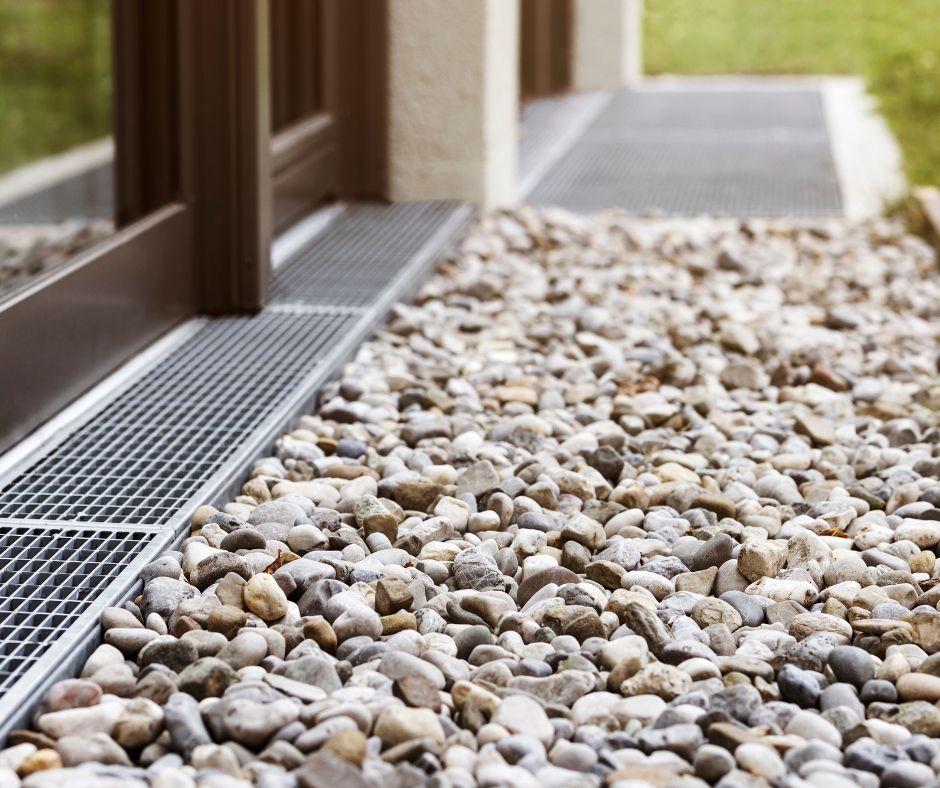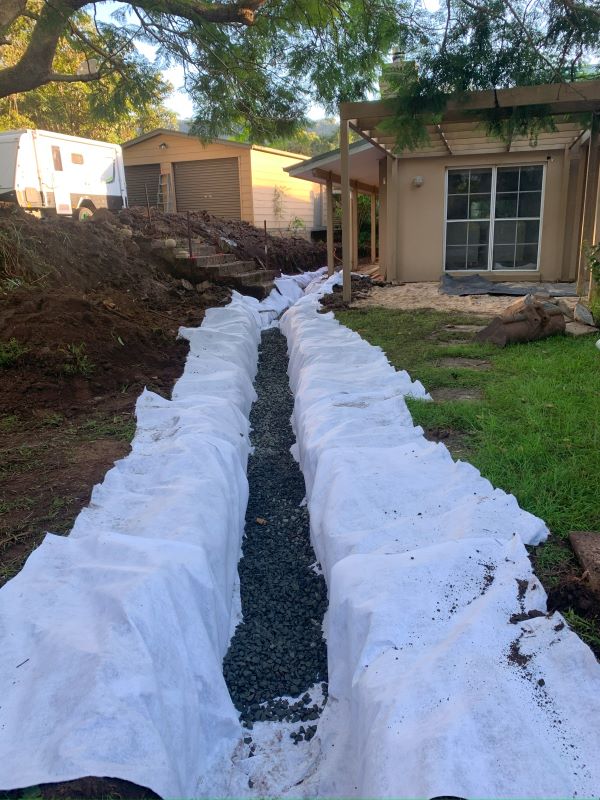Understanding the Key Factors Behind Blocked Stormwater Drains
Blocked stormwater drains often arise from a variety of natural and structural issues, including leaf debris, tree roots, and pipe collapse. The most common indicators of a blockage include slow water runoff, pooling water near grates, unusual gurgling sounds, or water backing up in your home after rainfall. To effectively address these problems, start by clearing visible surface debris, thoroughly checking for potential pipe blockages, and if the issues persist, consider the installation of a French drain system. This can efficiently redirect excess water away from the foundations of your home, preventing further issues.

During significant rainfall, your stormwater management system should effectively channel water away from your property. However, when drains become blocked, water can quickly back up, leading to flooding in gardens, potential damage to foundations, and even water seepage into basements or subfloors. For homeowners in Wollongong, particularly those residing on sloping blocks or in areas with clay-heavy soil, blocked stormwater drains can be a persistent concern that requires attention.
Whether your grate is overflowing or your backyard resembles a swamp after every storm, this comprehensive guide will delve into the various causes of such blockages, provide detailed instructions on how to clear them effectively, and advise on when it might be prudent to install a more advanced solution, such as a French drain system.
Identifying the Common Causes of Blocked Stormwater Drains in Wollongong
1. Accumulation of Leaf Litter and Garden Debris
During stormy weather, organic materials such as leaves, bark, and mulch can wash into surface grates, creating a natural barrier that impedes water flow. Without regular maintenance and cleaning, these blockages can accumulate quickly, particularly in leafy suburbs like Keiraville, Figtree, or Mt Keira. Homeowners should be vigilant about clearing these areas to prevent flooding and water damage.
2. Invasive Tree Roots Causing Blockages
Mature trees have extensive root systems that often seek out moisture in stormwater lines. Over time, these roots can infiltrate and crack PVC or clay pipes, restricting water flow and trapping additional debris within the pipes. This invasion can lead to significant blockages and requires prompt attention to prevent further damage.
3. Pipe Collapse or Silt Accumulation in Older Systems
Older stormwater systems, particularly those found in homes built before the year 2000, are prone to issues such as collapsed pipes, poor fall angles, or excessive sediment build-up. These faults often remain unnoticed until a major rainfall event occurs, leading to sudden failures that can cause extensive property damage.
4. Improper Surface Grading Leading to Water Collection
If your yard is not graded properly to slope away from your home, water will naturally collect near walls and grates, leading to potential flooding. Even a functioning pipe may struggle to manage the excess water if the surface does not facilitate proper drainage. Regular assessments of your property’s grading can help mitigate these issues.

Recognising the Signs of a Blocked Stormwater Drain
- Surface water pooling near grates or downpipes
- Gurgling or bubbling sounds during rainfall
- Water overflowing from gutters or pits
- Soggy lawns or spongy soil days after rainfall
- Basement or garage flooding following storms
Initial Steps to Clear a Blocked Stormwater Drain Effectively
1. Clear Surface Debris
Start by removing leaves, silt, and other debris from grates, pits, and downpipe guards. In numerous cases, the blockage can be traced to material just beneath the surface cover.
2. Flush the Line with Water
Utilise a high-pressure hose or jetter to eliminate shallow blockages effectively. However, if the system starts to back up, cease operations immediately, as further pressure may exacerbate a collapsed section of the pipe.
3. Employ a Drain Camera for Inspection
A licensed plumber can conduct a thorough inspection of stormwater pipes using a CCTV drain camera to uncover cracks, blockages, or misaligned connections that may be causing issues.
4. Engage Professionals to Clear Tree Roots
If tree roots are found to be the cause of the blockage, pipe relining may be the best long-term solution, as it seals the pipe without the need for excavation. If you're unsure about the best course of action, our Wollongong drainage specialists can provide a diagnosis and repair blocked systems quickly and effectively.
When is it Time to Install a French Drain System?
French drains are innovative subsurface drainage systems designed to redirect water away from your property. These systems consist of a gravel-filled trench containing a perforated pipe, installed at a slight gradient to transport water toward a designated discharge point, ensuring effective drainage.
Scenarios Where a French Drain is Ideal:
- Yard flooding occurs despite properly functioning downpipes
- Water pooling near retaining walls or foundations
- Driveway runoff overwhelms surface drains
- Sloped blocks where water channels downhill
Our team excels in designing and installing custom French drain systems in Wollongong, tailored to local soil conditions, slope, and rainfall patterns, ensuring optimal performance.

Comparing French Drains to Standard Stormwater Systems
| Feature | Stormwater Drain | French Drain |
|---|---|---|
| Handles Roof Runoff |  |
 |
| Handles Groundwater |  |
 |
| Installed Under Grass |  |
 |
| Requires Surface Inlet |  |
Optional |
| Best For Surface Flow |  |
Partial |
| Best For Subsoil Drainage |  |
 |
Effective Strategies for Preventing Future Stormwater Drain Blockages
- Clear gutters and grates thoroughly before the storm season arrives
- Install leaf guards on downpipes to minimise debris entry
- Schedule annual drain jetting or camera inspections to maintain system integrity
- Avoid planting trees near underground drainage lines to prevent root intrusion
- Ensure lawn gradients slope away from structures to facilitate effective water drainage
Essential Advice for Homeowners in Wollongong Regarding Stormwater Management
Blocked stormwater drains can be more than just a minor inconvenience; they pose significant risks to your home’s structural integrity. Issues like flooded footings, damp basements, and recurring water pooling indicate an overloaded or malfunctioning drainage system that demands immediate attention.
Should clearing surface debris fail to resolve the problem, there may be a more serious underlying issue within your pipes or in the overall water management strategy of your property. This is where expert design and drainage solutions prove invaluable in safeguarding your home.
Don’t postpone action until the next flood strikes. If your yard is retaining water, your drainage pits are overflowing, or you suspect the presence of tree roots in your lines, book an inspection with our team today.
We will accurately identify the fault, and if necessary, design a tailored French drain or pipe solution specifically suited to your site requirements.



Ah, the classic battle of humans versus nature in the ongoing saga of stormwater drains! It’s like a horror movie where the villains are rogue leaves and tree roots, and we’re just trying to keep our homes dry and happy. The gurgling sounds always feel like the pipes are belching up a warning, don’t they? I had a neighbor who once claimed their drain was a portal to another dimension because of how dramatically it backed up—cue the dramatic music!
You’ve touched on a critical aspect of home maintenance with the challenges of blocked stormwater drains. I once faced a similar issue after a heavy storm, and it was eye-opening to see how quickly water could accumulate and create chaos in my yard. I had never considered the role of tree roots until a neighbor mentioned their experience with them infiltrating pipes. It made me realize how interconnected our landscaping choices are with stormwater management.
Ah, the joyous saga of blocked stormwater drains—it’s like the modern-day equivalent of trying to untangle Christmas lights after a long year. You’re there, armed with your trusty rake and a sense of optimism, thinking, “How bad can it be?” Oh, how naive we can be! The list of culprits you provided is all too familiar. Just the other day, I found myself knee-deep in leaves and, if I’m being honest, questioning my life choices as I battled a small army of tenacious tree roots. It’s a gory scene!
Your exploration of the factors behind blocked stormwater drains really highlights some important challenges that many homeowners face, especially in regions prone to heavy rainfall. I’ve experienced firsthand how quickly a blocked drain can turn a light shower into a small flood in the backyard. It’s fascinating how something as seemingly simple as leaf debris or roots can have such a major impact on our properties.
It’s interesting how those seemingly small details, like leaf debris or tree roots, can turn into major headaches for homeowners. I can relate to your experience; I once had a similar situation during a heavy storm when I noticed the water creeping up in my yard. It’s a stark reminder of how interconnected our environments are and how natural elements can have such a big impact on our living spaces.
Your insights on the factors behind blocked stormwater drains really resonate with me. It’s fascinating how something as seemingly simple as water drainage can have such complex implications for our homes and our environment. I never truly appreciated the dynamics of stormwater management until I had a personal experience with a blocked drain during a torrential downpour last summer. The rain came down so hard that my backyard transformed into a mini lake!
It’s interesting to see how something as seemingly mundane as stormwater drains can really illustrate the interconnectedness of our built environment and nature. I’ve experienced my fair share of blocked drains, and it’s always a bit surprising just how quickly a minor issue can escalate, especially when heavy rain tosses our usual caution to the wind.
This is a really relevant topic, especially as we enter the wetter months when stormwater management becomes even more crucial. I’ve always found it interesting how often our urban infrastructure is taken for granted until something goes wrong. I experienced a blocked stormwater drain firsthand after a heavy rain last year. It was alarming to see water pooling around my foundation, and the strange gurgling sounds coming from the pipes really made me realize how interconnected everything is.
I really appreciated your insights on the various reasons behind blocked stormwater drains and the practical solutions you’ve outlined. I remember a few years ago, after a particularly heavy rainstorm in my area, I was faced with a similar situation. It was quite a mess, with water pooling prominently near the grates and even starting to seep into my basement. It was alarming to see how quickly the water accumulated, and it prompted me to reevaluate my own stormwater management setup.
I completely resonate with your points about blocked stormwater drains. Living in a neighborhood with a lot of old trees, I’ve seen firsthand how quickly a seemingly minor blockage can escalate into a bigger issue, especially during heavy rain. Just last summer, after a downpour, I had my own experience with water pooling near my driveway. It was a wake-up call to get out there with a rake and clear the leaves before it turned into a mess.
Oh, the joys of stormwater management! There’s nothing quite like watching your yard transform into a small lake after a good rain, complete with its own collection of floaty debris — aka the neighborhood’s three new favorite rubber ducks. Seriously though, your breakdown of the various culprits behind blocked stormwater drains was both informative and a little too familiar for comfort.